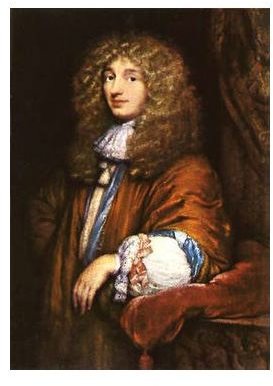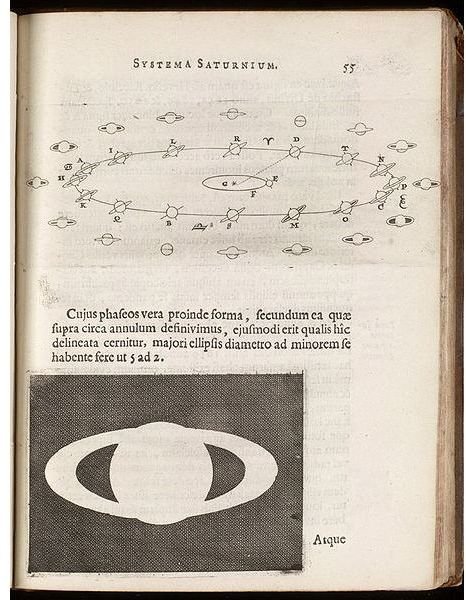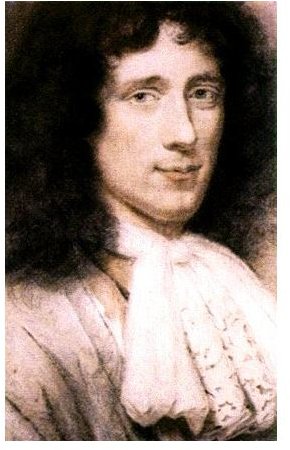Christiaan Huygens - Inventor, Mathematician, and Discoverer of Saturn's Moon Titan
Biography
Christiaan Huygens
Public Domain: Wikimedia Commons
Birth: Born in The Hague, Netherlands, 14 April 1629.
Parents: He was born into an influential Dutch family primarily engaged in serving the Royal family of Orange. His father, he was educated in natural philosophy and due to his influential position as a diplomat, enjoyed a friendly relationship with notable individuals such as Mersenne and Descartes.
Education: Huygens was tutored at home until the age of 16. He then (1645-1647) studied law and mathematics at the University of Leiden. Thereafter, Huygens continued studying law and mathematics at the College of Orange in Breda.
Positions: In 1663 Huygens was accepted into the Royal Society of London. In 1666 he was invited to join the new Académie Royale des Sciences.
Publications:
During the course of his life Huygens published the following works:
-
Mathematics: Cyclometriae (1651), Circuli Magnitudine Inventa (1654), De Ratiociniis in Ludo Aleae (1655)
-
Astronomy: Systema Saturnium (1659)
-
Physics: Horologium Oscillatorium sive de motu pendulorum (1673), Traité de la lumiere (1678)
-
Extraterrestrial Life: Cosmotheoros (1695)
Christiaan Huygens died in The Hague, 8 July 1695.
Accomplishments in Astronomy

In 1654, Huygens began taking an active interest in lens grinding. This enabled him to construct a powerful telescope through which he discovered one of Saturn’s moons—later named Titan—which had escaped detection previously, chiefly due to the inferiorty of early 17th century telescopes.
Later, with progressively better telescopes, Huygens was able to solve the mystery of Saturn’s shape. Astronomers in the early 17th century were baffled by the protrusions on the sides of Saturn. The existence of the “handles” was explained by sundry theories. One theory attributed the handles to a cloud of vapor formed of gases purportedly exuded from the planet’s equatorial region. Huygens showed from observational evidence that Saturn had a ring revolving about its equator at an angle of 20 degrees to Saturn’s orbit.
Huygens discussed his astronomical findings in Systema Saturnium. In the book, he provided the period of Titan’s revolution: 15 days, 23 hours and 13 minutes (a mere 32 minutes more then the actual value). The book also contained Huygens’ estimates of the diameters of the planets of the Solar System.

Systema Saturnium
Public Domain by Wikimedia Commons
Beyond Astronomy—Physics and Mathematics
Huygens began his scientific career expounding the fallacies of prevailing mathematical method. His insights were published in two successive books: Cyclomatriae and Circuli Magnitudine Inventa. Huygens made significant contributions to the field of mechanics. He described the laws of pendulum motion as well as the law of centrifugal force in uniform circular motion. His work on circular motion assisted Hooke, Halley and Wren to formulate the inverse square law of gravity.
Huygens engaged in much effort to improve the accurate measurement of time. Why? There was a great demand for accurate time keeping devices that could be deployed aboard ship, so that longitude could be correctly determined. Huygens was the first to build a pendulum clock, for which he acquired a patent in 1656.
Huygens worked on optics in his attempt to study light. In 1678 he published Traite de la lumiere, in which he proposed the “wave theory” of light. Huygens made a study of colliding bodies. He proved experimentally that in collisions involving no change of direction – the total momentum of the bodies after collision was equal to the magnitude of momentum before the collision.
Not All That Glitters is Gold
In January 1695, Huygens completed a book titled, Cosmotheoros. The book was published posthumously and in it, Huygens speculated on the feasibility of existence of extra terrestrial life. He supported the notion of extra terrestrial life by citing observational evidences of planets Jupiter and Mars having dark and bright spots. This, he explained could be justified by existence of water and ice. He further reasoned that each planet might have water with varying properties. According to him, variance in the property of water was essential if it was to be available to the inhabitants of the planets in liquid form. He argued that since Earth’s water would easily freeze on Jupiter and instantly vaporize on Venus, it made sense to assume that the property of water would vary from planet to planet. About the nature of extraterrestrial life forms, he was of the opinion, that if not identical - plants and animals of other planets would have similar biological form as that of organisms of Earth.
In Conclusion
Despite some blind alleys Christiaan Huygens pursued, clearly this seventeenth century scientist was one of the finest scientific minds of his age—or, indeed, of any age. Unfortunately, he was suffered from vanity—so much so that he refused to collaborate with even more famous Isaac Newton! Still, in his perambulations from mathematics to time to light to space, he proved himself “a man for all seasons.”
References and Resources
The Gap Group: Christiaan Huygens
Smithsonian Institution Libraries: Christiaan Hugens - <em>Systemia Saturnium</em>
Universiteit Utrecht: Cosmotheoros
Also from BrightHub: Moons of the Planet Saturn, by Jason C. Chavis.
